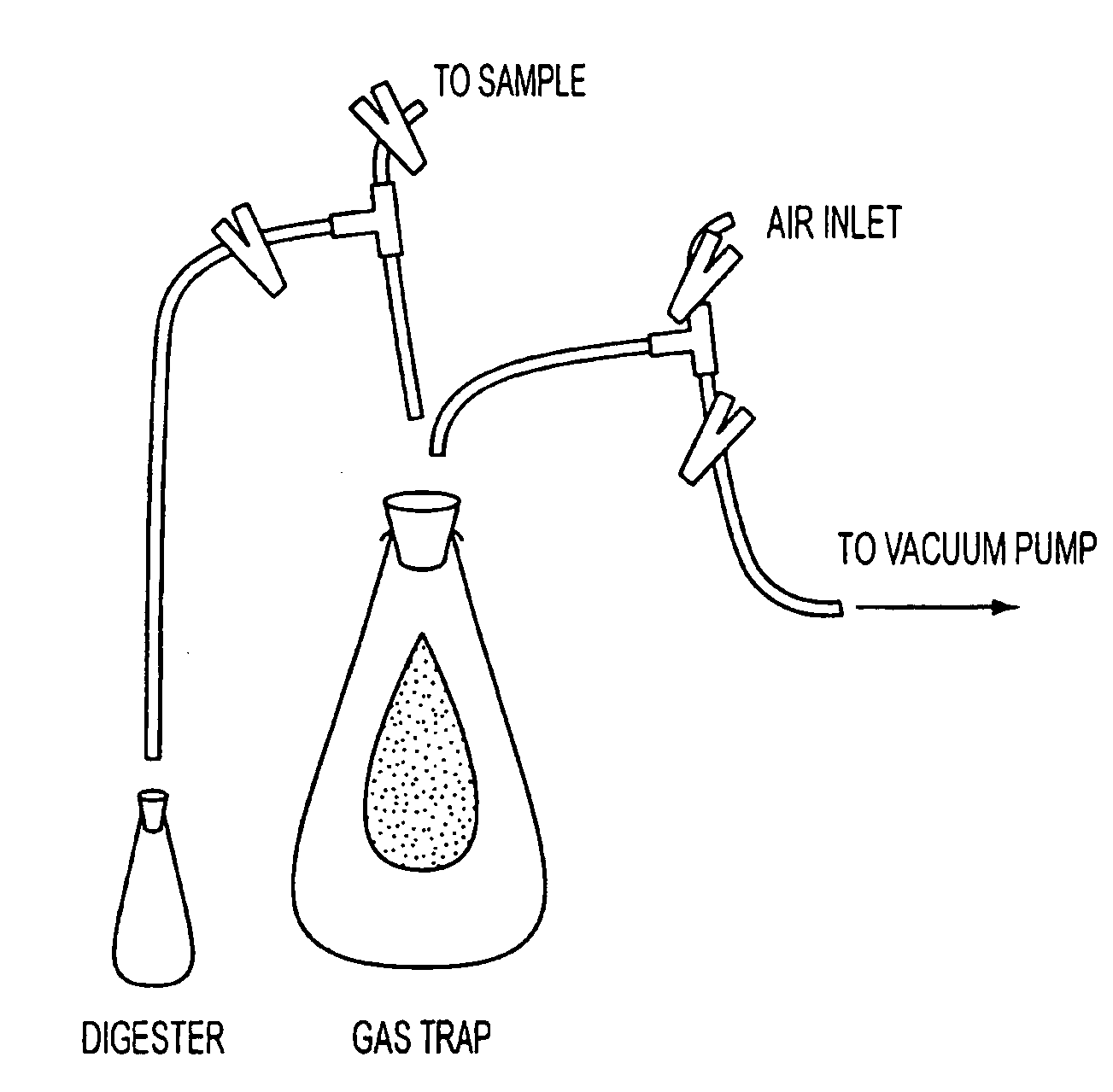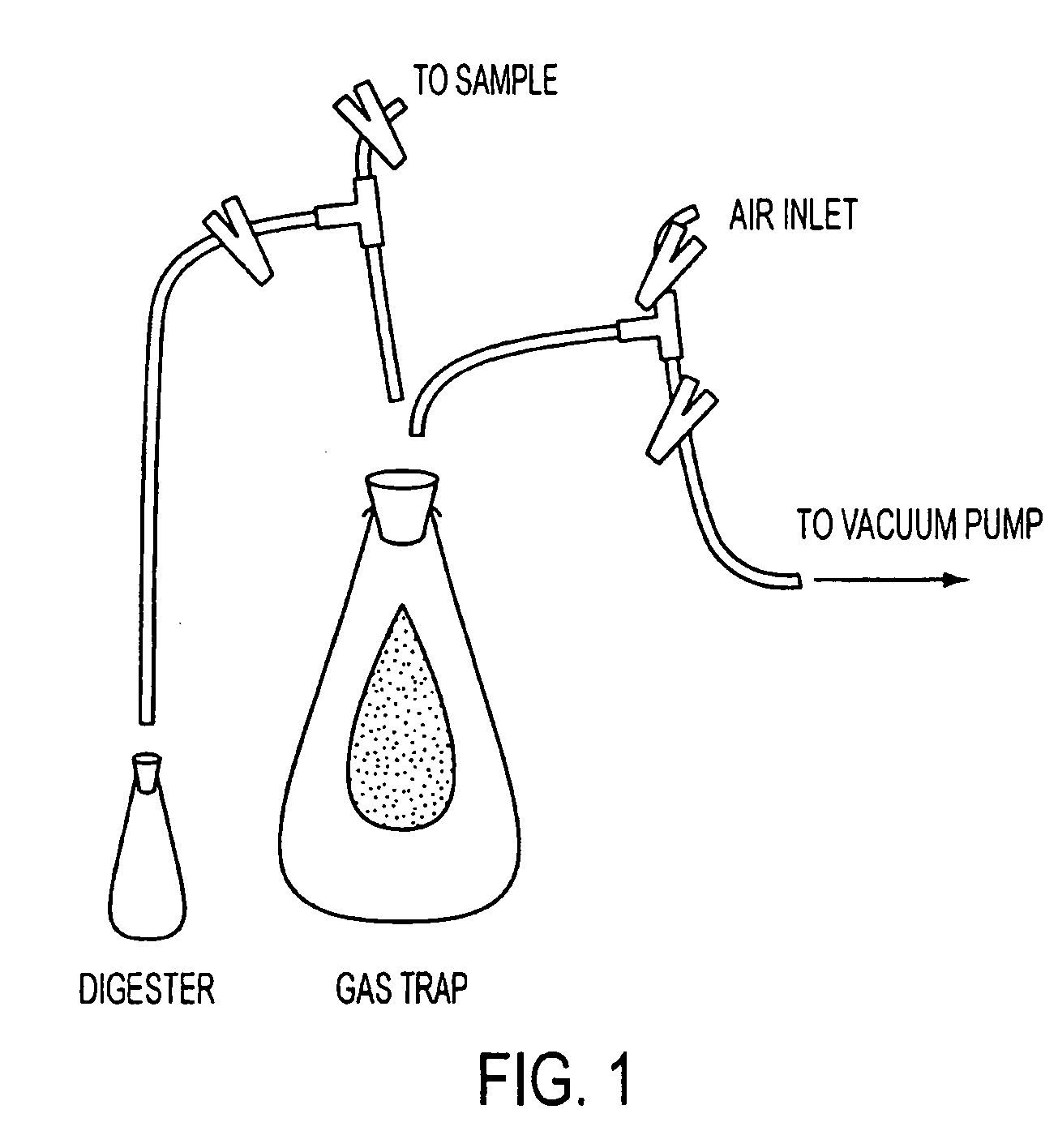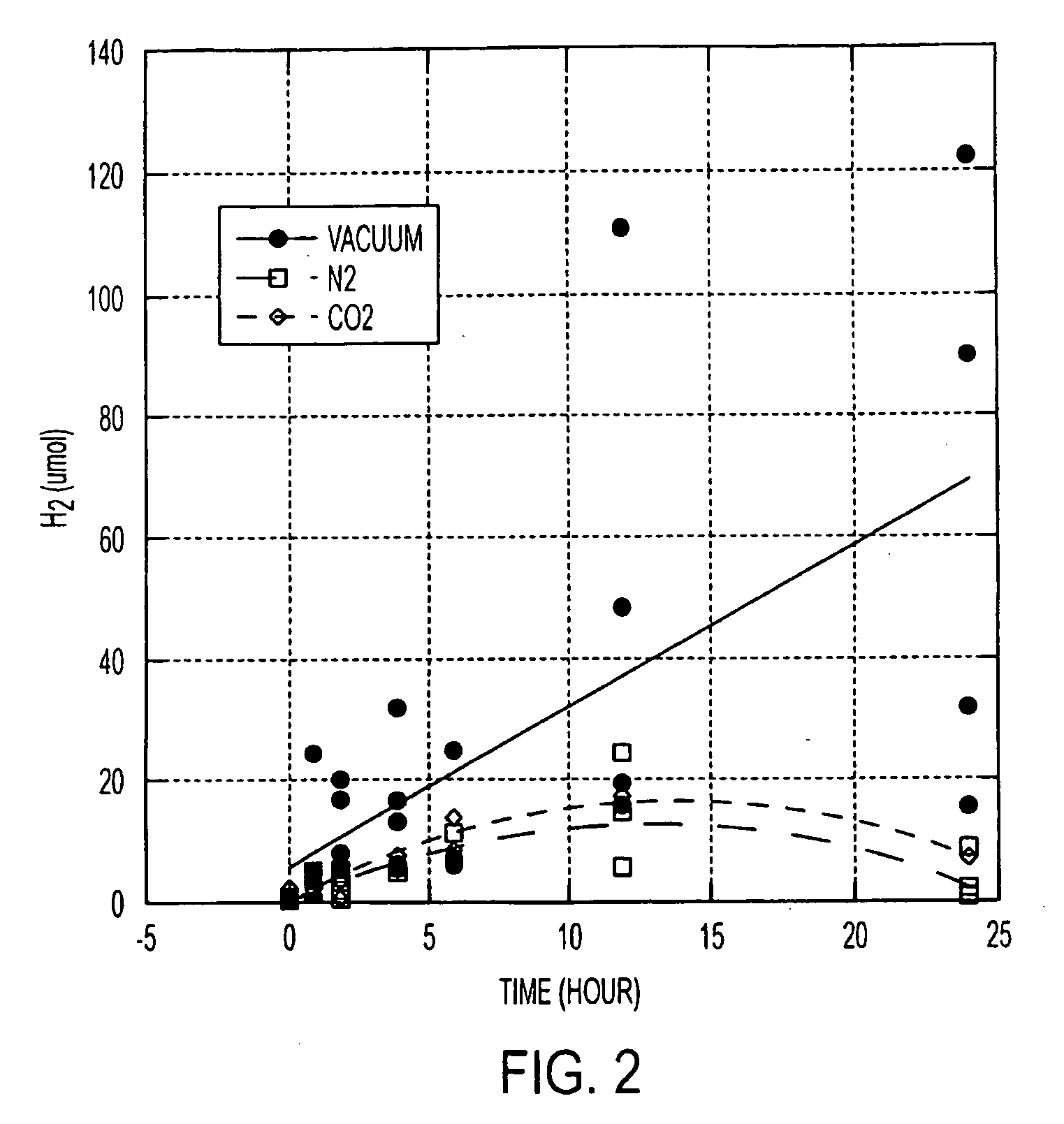Process for rapid anaerobic digestion of biomass using microbes and the production of biofuels therefrom
a technology of biomass anaerobic digestion and biomass, which is applied in the direction of gaseous fuels, waste based fuels, fuels, etc., can solve the problems of not being shown to be converted to ethanol, unable to meet about 15% of current transportation needs, and corn-derived ethanol cannot provide a significant alternative to imported oil
- Summary
- Abstract
- Description
- Claims
- Application Information
AI Technical Summary
Benefits of technology
Problems solved by technology
Method used
Image
Examples
example 1
Effect of Vacuum or N2 Perfusion on Fermentation Balance
[0122]In one treatment, partial pressures of all fermentation gases were reduced simultaneously by applying vacuum (0.07 atm), and in another treatment, partial pressures were reduced by perfusing inert N2 gas through the system. A typical in vitro rumen fermentation batch culture with gases collected in attached mylar balloons served as the control. Fourteen 250-ml flasks with media and inocula from the rumen were incubated for each of the three treatments, with two flasks removed at each time point. Samples were incubated for 0, 1, 2, 4, 6, 12, or 24 h. The experiment was replicated with three runs, but some results varied by run and are therefore described separately.
[0123]The control treatment used sodium bicarbonate buffer under CO2 and reduction with Na2S and cysteine as recommended for in vitro fermentation. Measured 1-g samples of timothy hay (previously ground through a 1-mm screen of a Wiley mill) were incubated in 25...
example 2
Effect of Gas Pressure on Digestion and Gas Production
[0147]An experiment was conducted to compare the level of vacuum pressure on production of fermentation gases, volatile fatty acids, alcohols, and the degradation of substrate. Four levels of total gas pressure were compared: 0.07 atm (as for previous experiment), 0.25 atm, 1 atm, or greater than 1 atm. The moderate pressure was controlled by attaching a solenoid valve to the vacuum line. This valve was wired to a vacuum switch that was set to open the line to the vacuum when the pressure exceeded 0.33 atm and close when it fell to 0.25 atm. The 1-atm treatment was achieved by connecting a mylar balloon to the flask. The >1-atm treatment was achieved by incubating the samples in 125-ml Wheaton bottles closed with a crimp to allow gas pressure to build up.
[0148]In most other respects, this experiment was similar to the previous one except half as much timothy grass hay (0.5 g) was incubated in 125-ml flasks with 40 ml phosphate-bu...
example 3
Gas Composition and Pressure
[0157]Whereas previous experiments showed that hydrogen production was increased with gas perfusion to maintain a constant partial pressure of hydrogen, an experiment was conducted with greater perfusion rates to determine if greater H2 production could be obtained, and what other shifts in metabolism would occur to support the greater H2 production. Treatments included a control in which samples were maintained under moderate Vacuum (0.25 atm) starting with N2 gas in the headspace but without gas perfusion, and a set of controls starting with N2, CO2, air, or H2 in the headspace but without perfusion.
[0158]In other treatments, gases were perfused through the headspace at regular time intervals (T=2, 4, 6, 8 12 h) either with moderate vacuum applied after the perfusion (N2, CO2, or air), or not (N2, CO2, air, or H2). For perfusions at 1 atm pressure, 200 ml gas (88 ml at 1 atm) was removed from the 250-ml flask and forced into the collection balloon, afte...
PUM
| Property | Measurement | Unit |
|---|---|---|
| temperature | aaaaa | aaaaa |
| total pressure | aaaaa | aaaaa |
| total pressure | aaaaa | aaaaa |
Abstract
Description
Claims
Application Information
 Login to View More
Login to View More - R&D
- Intellectual Property
- Life Sciences
- Materials
- Tech Scout
- Unparalleled Data Quality
- Higher Quality Content
- 60% Fewer Hallucinations
Browse by: Latest US Patents, China's latest patents, Technical Efficacy Thesaurus, Application Domain, Technology Topic, Popular Technical Reports.
© 2025 PatSnap. All rights reserved.Legal|Privacy policy|Modern Slavery Act Transparency Statement|Sitemap|About US| Contact US: help@patsnap.com



